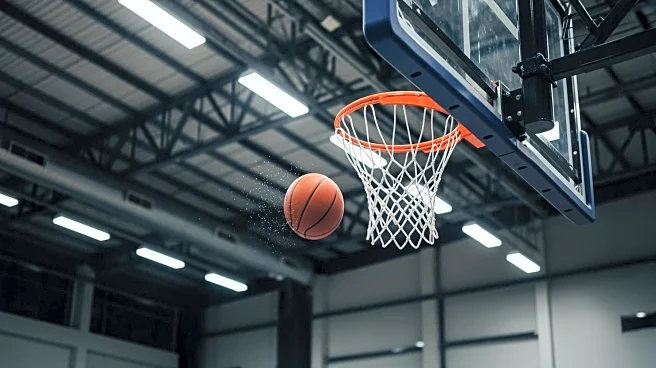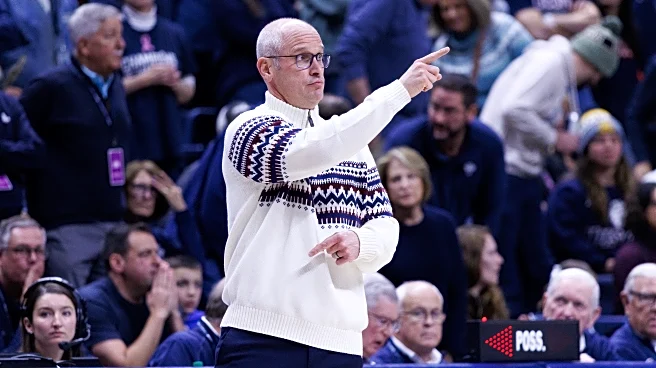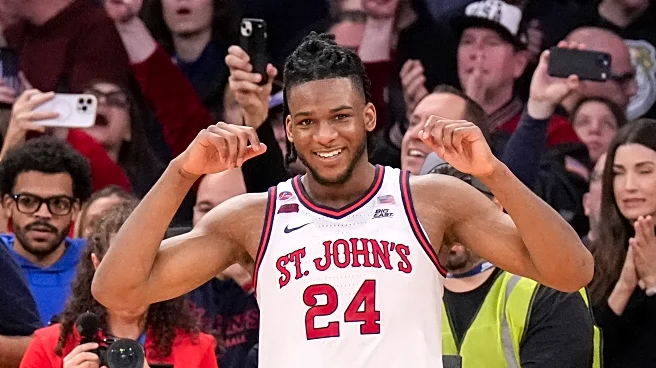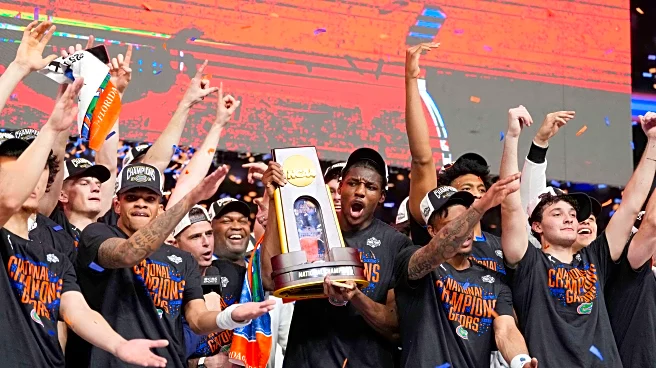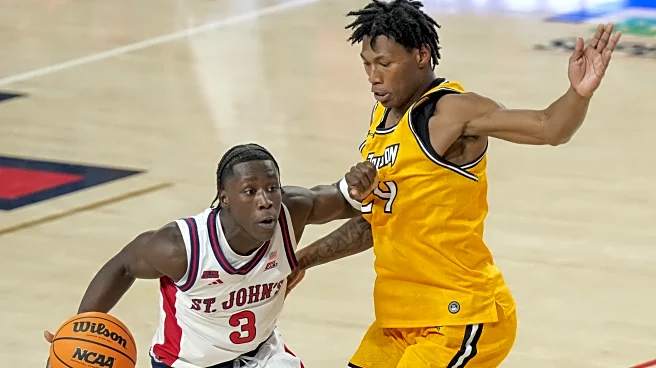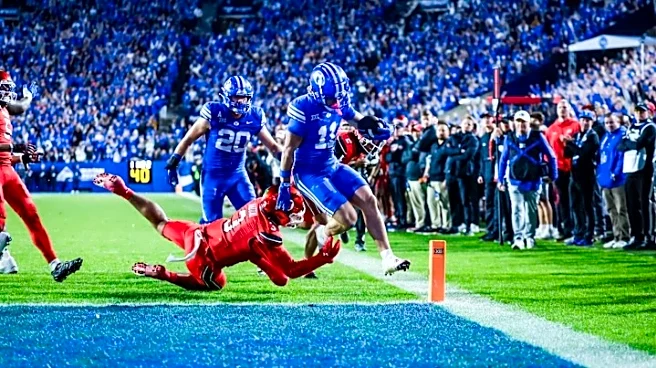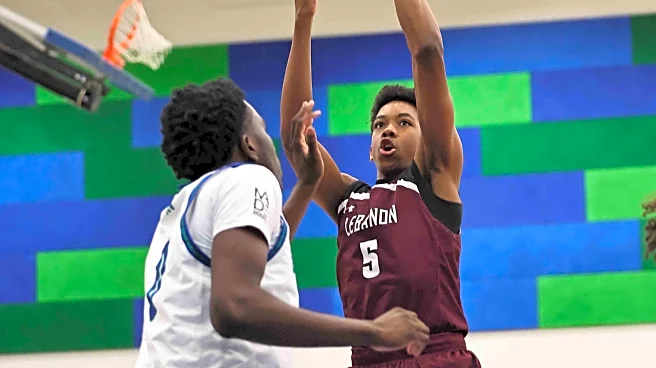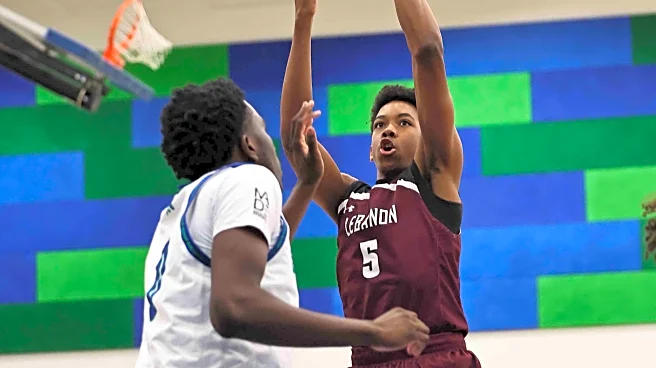What's Happening?
Georgetown head coach Ed Cooley has expressed his views on Bryce Hopkins' transfer to St. John's, where he is expected to be a standout player under coach Rick Pitino. Hopkins, originally from Illinois,
began his college basketball career at Kentucky before transferring to Providence, where Cooley was the head coach. During his time at Providence, Hopkins averaged over 15 points and eight rebounds per game before suffering a torn ACL. After recovering, Hopkins entered the transfer portal again and chose St. John's, where Pitino aims to develop him into a key player. Despite not starting in the preseason opener against Towson, Pitino has confirmed that Hopkins will be in the starting lineup for the upcoming exhibition game against Michigan at Madison Square Garden.
Why It's Important?
Hopkins' transfer to St. John's and his potential under Rick Pitino's coaching could significantly impact the team's performance in the upcoming season. As a player with proven talent and experience, Hopkins is expected to contribute to St. John's aspirations of becoming a top team. His development and performance could also influence the dynamics within the Big East Conference, where competitive recruiting and player development are crucial. For Georgetown, Cooley's comments reflect the ongoing challenges of recruitment and player retention in college basketball, highlighting the importance of strategic coaching and player development.
What's Next?
Hopkins is set to start in the exhibition game against Michigan, which will provide an opportunity to showcase his skills and potential impact on the team. As the season progresses, his performance will be closely watched by fans and analysts, potentially affecting his prospects for professional basketball. For St. John's, successful integration of Hopkins into the team could enhance their competitiveness in the Big East Conference, while Georgetown will continue to focus on developing their roster amidst the challenges of player transfers.
Beyond the Headlines
Hopkins' journey through multiple transfers underscores the evolving landscape of college basketball, where the transfer portal has become a pivotal tool for players seeking better opportunities and development. This trend raises questions about the long-term implications for team stability and the role of coaching in player retention. Additionally, the emphasis on player development and recruitment strategies highlights the competitive nature of college sports, where institutions must adapt to changing dynamics to maintain their status and success.


